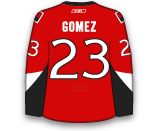There is no word on who Dahlbeck will be in for, but we will find out during pre-game warmups.
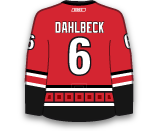
There is no word on who Dahlbeck will be in for, but we will find out during pre-game warmups.

Vanek had been stuck on the third line with Kyle Brodziak and Nino Niederreiter, but this afternoon he moved to the top line with Mikael Granlund and Zach Parise. It has not been a great return home for Vanek, who has just 14 points (2G / 12A) in 25 games. A move to the top-line should hopefully get him going.
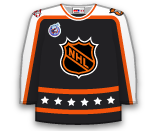
Andrighetto, 21, was recalled by the Canadiens on Friday. He was the Habs third-round pick (86th overall) in 2013. The 5-foot-9 forward has registered 18 points (9G / 9A) in 21 games with Hamilton (AHL) this season. He will replace Lars Eller, who is out with an upper-body injury.
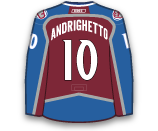
Bartkowski has been a healthy scratch for the last two games, but he will get back into the lineup tonight vs. Arizona. Morrow has one goal in 14 games this season.
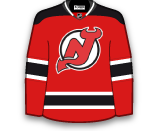
Griffith has been a healthy scratch for the last three games, but he will get back into the lineup today vs. the Coyotes. Griffith has five goals and two assists in 19 games this season. Pastrnak has one assist in five games.

Kuznetsov was a healthy scratch on Thursday, but he will be back in the lineup tonight vs. the Devils. He will be in for Andre Burakovsky—Barry Trotz indicated he might platoon the two young forwards for awhile.

Downie took line rushes with Sidney Crosby and Nick Spaling during pre-game warmups this afternoon. The Penguins have been banged up at forward, so Downie, who has just 10 points (3G / 7A) in 25 games, will skate with Crosby vs. the Senators.
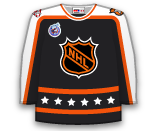
Rychel was skating with Ryan Johansen and Jack Skille at the Blue Jackets' morning skate. The 20-year-old has registered three assists in his first three NHL games, despite averaging only 10:47 TOI.
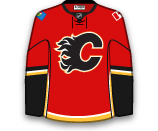
Hemsky stayed on late at the morning skate, which suggests that he will not play tonight vs. the Canadiens. Curtis McKenzie will enter the lineup for Hemsky.

Bourque skated on the top line with Ryan Getzlaf and Corey Perry in the Ducks’ morning skate and it looks like he and Matt Beleskey will swap spots tonight vs. the Wild. Bourque has one assist, a minus-2 rating and 11 shots in six games with the Ducks. A spot on the Ducks top-line might make him a cheap one-day option in a quiet night across the NHL.
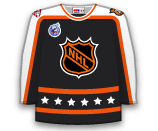
Dahlbeck, 23, was the 79th overall pick in 2011. After spending three years in Sweden, he is now in his third full year in North America. He has totalled 12 goals and 29 assists (41 points) in 97 AHL games through last year and 22 games this season. No word on who would come out of the lineup to make room for Dahlbeck.

With Patric Hornqvist not on the ice this morning after suffering an injury last night, Megna filled his spot on the Penguins top line with Sidney Crosby and Nick Spaling. Pittsburgh is without Crosby's two usual linemates in Chris Kunitz and now Hornqvist so they will need someone to step up and fill those shoes. For now it looks like it will be Megna, who now has some sneaky value in one-day leagues.

Kuznetsov took line rushes on the Capitals second line in practice this morning, but will serve as healthy scratch while Michael Latta moves into the lineup on the fourth line and Alexander Burakovsky to the second line. Kuznetsov has just eight points (2G / 6A) in what has been a disappointing 23 games.

Tobias Enstrom will miss the rest of December, Zach Bogosian will miss 4-6 weeks and Grant Clitsome is out for two weeks, so that means Big Buff goes back to the blue line. He has 11 points (5G / 6A) in 26 games as a forward this season, so his numbers are already underwhelming so a move to the backend likely isn’t going to help his cause.
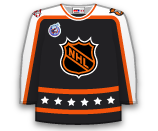
Lindbohm was recalled this morning and will be in the lineup in Nashville. There is no word on who is coming out, but our guess is that it will be Chris Butler. Lindbohm has eight points (4G / 4A) in 20 games with Chicago (AHL).

Reinhart was recalled on Wednesday and with the Isles missing Travis Hamonic, Lubomir Visnovsky and Johnny Boychuk, he will get into the lineup tonight. Reinhart failed to record a point with a minus-1 rating and two PIMS in three games earlier this season.
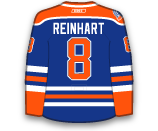
Lecavalier was a healthy scratch on Tuesday for the first time in his NHL career and despite the Flyers losing 2-1, they will sit the veteran yet again.
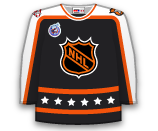
Holden’s move to forward is part necessity and part punishment. Holden has struggled this season, evidenced by his team-worst minus-16 rating. He will skate on the Avs’ fourth line with Cody McLeod and Michael Sgarbossa, while Karl Stollery will take his spot on the blue line.

Pitlick was a plus-1 and had one shot in 9:57 TOI in his season debut on Monday. In 14 games in Oklahoma City (AHL), Pitlickhad three goals and six assists. He could have some value in daily fantasy leagues, but the way things are going for the Oilers right now, I wouldn’t have too much faith.

Gomez had two goals and 10 assists (12 points) in 46 games with the Panthers last season. His last four seasons have been a struggle, but he returns to the team who he started his NHL career with. He is expected to centre the top-line with Patrik Elias and Jaromir Jagr.
